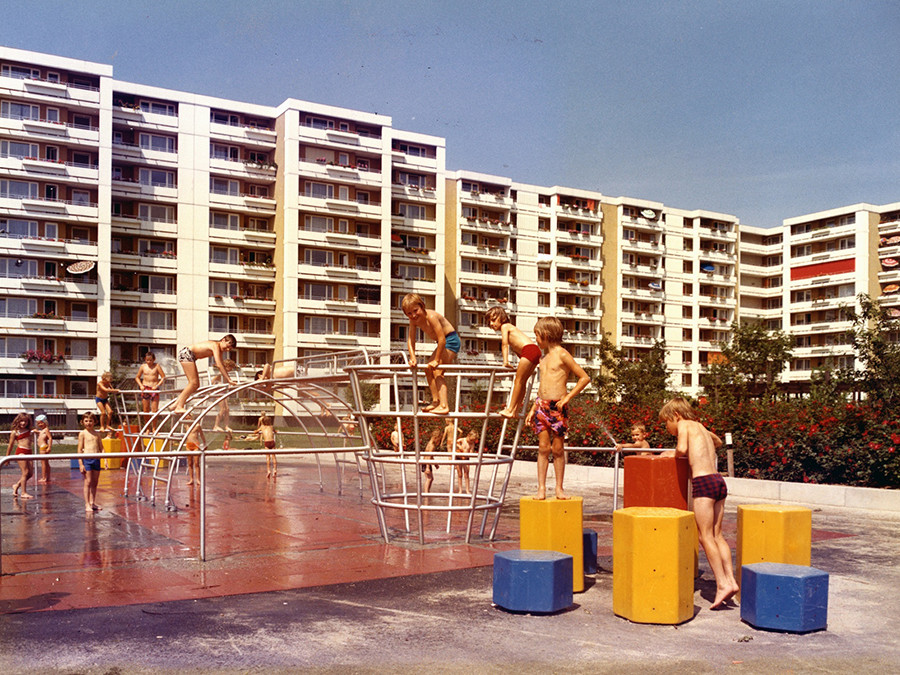“Die Neue Heimat” exhibition at TUM’s Architecture Museum
A utopia and its buildings: Housing for everybody

The call for affordable housing is becoming increasingly urgent in Germany. Some even go so far as to compare the current housing shortage to that of the post-war era. Back then, Neue Heimat offered solutions: The union company built almost half a million apartments over a period of over thirty years. “In those days, there was a social consensus that projects like those of Neue Heimat were necessary to eradicate the housing shortage as quickly as possible — in a socially responsible manner,” says Professor Andres Lepik, Director of the Architecture Museum of TUM. For the first time since the collapse of the company under the shroud a very public scandal in 1982, the exhibition “Neue Heimat. A Social Democratic Utopia and Its Buildings” examines the construction programs of Neue Heimat.
Models, photographs and historical material
The exhibit presents photographs and film productions, plans and original models of outstanding building projects by Neue Heimat. Examples include Neue Vahr in Bremen, which wrote architectural history with its elegant residential tower designed by architect Alvar Aalto. Or the overspill town of Neuperlach: The new district of Munich, designed on the drawing board, was the largest European housing estate project at the time, providing housing for 80,000 people. In Munich alone, Neue Heimat constructed multiple estates, including the park city of Bogenhausen and Am Hasenbergl.
Although these large residential estates and overspill towns contributed to solving the housing shortage, they were often criticized as being inhospitable planned cities. Photographs by Herlinde Koelbl portray the residents of Neuperlach and its buildings. Some show graffiti with statements like “Concrete can kill”. Things used to be very different in the early days of Neue Heimat, according to Hilde Strobl, the curator of the exhibit. In the beginning, the excitement surrounding the enticement of new housing dominated the mood. Neue Heimat’s promise that it could build an entire city on demand was deemed a blessing at the time. The Architecture Museum documents these discourses with several newly produced interviews with contemporary witnesses.
Architecture of yesterday, solutions for tomorrow?
“With our exhibit, we want to encourage people to contemplate what has become of the social democratic vision of ‘housing for all’,” says the curator. However, it is not the intention to portray the economic or social history of Neue Heimat – the exhibition is primarily about the architecture. Photographs by Ulrike Myrzik and Manfred Jarisch provide an update on the status of the buildings today.
The director of the museum, Professor Lepik, considers the exhibition to be the beginning of a necessary reappraisal of the past: “For a long time, large-scale housing estates such as Neuperlach were viewed as problematic, almost as a knee-jerk reaction. This circumstance has so far prevented a differentiated and historically appropriate assessment of the building programs and the political objectives of Neue Heimat. It is high time to revisit the history of Neue Heimat.”
Publication:
Lepik, Andres; Strobl Hilde (Ed.): Die Neue Heimat (1952-1980). Eine sozialdemokratische Utopie und ihre Bauten. Detail Verlag, München 2019, 236 pages. (In German only)
ISBN: 978-3-95553-476-9
Further Information:
The majority of the extensive collection of historical materials comes from the Hamburg Architecture Archive and the archive of the Architecture Museum of TU Munich. Further lenders include the Berlinische Galerie and the German Museum of Architecture (DAM) in Frankfurt as well as a number of municipal archives and private lenders.
Contact:
Prof. Dr. Andres Lepik
Technical University of Munich
Architecture Museum
e-mail
Dr. Hilde Strobl
Technical University of Munich
Architecture Museum
Tel: +49 (0) 89 289 28171
e-mail